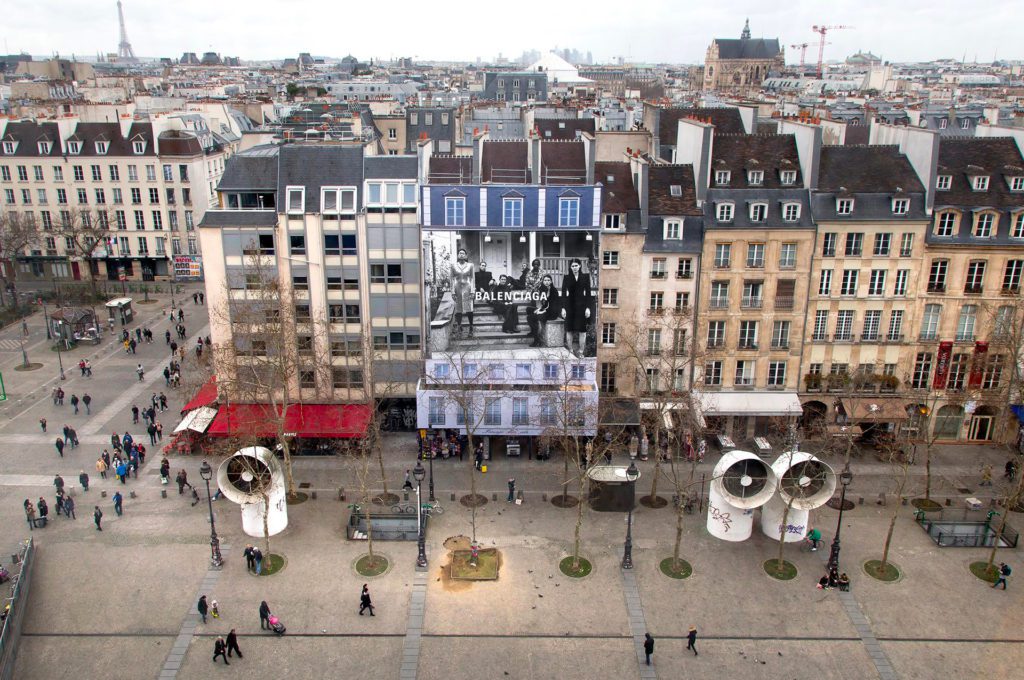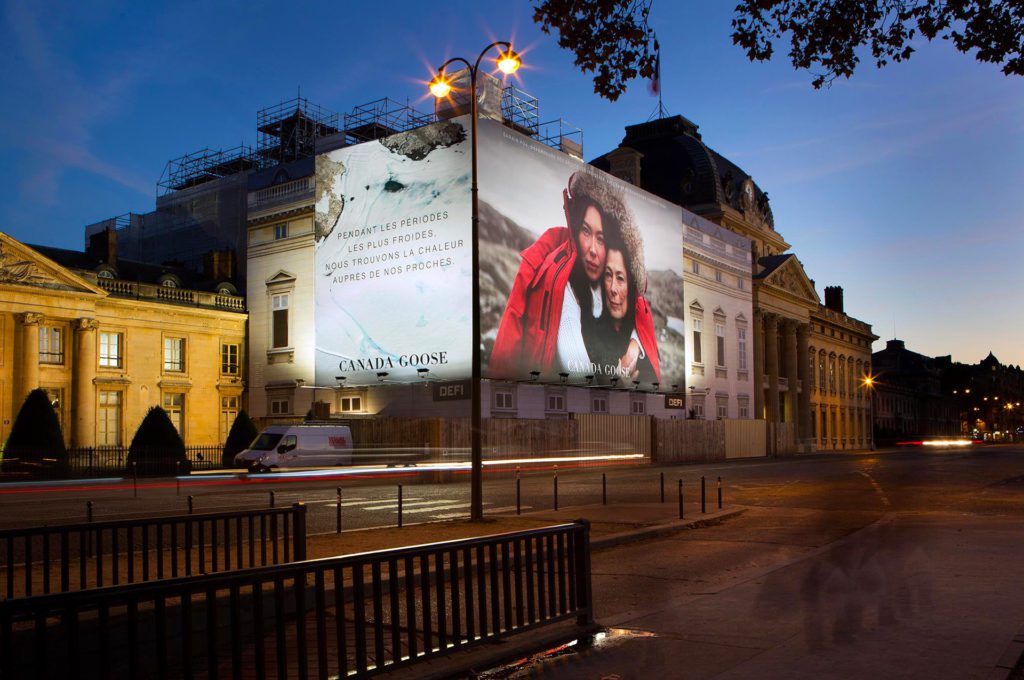EVENT BANNERS IN PARIS: THE HIDDEN SIDE
Perhaps you have already seen these while walking through the streets of Paris. We are talking, of course, about those giant banners on scaffoldings. Why are they there? And why is it beneficial to exploit them?

What is an event banner?
An event banner –known at DEFI Group as Citywall– is a spectacularly large medium that can sometimes reach a surface area of over 600m² and allow brands to communicate. These banners can be permanently on the facade of a building or can temporarily cover the scaffolding of a construction site.
In Paris, the conditions for the use of these banners are specific. Indeed, following the decree n°2007-487 of 30 March 2007, these advertisements can only be used within the framework of the restoration of a monument classified as historical heritage.
Several rules regulate the banners, such as the need to create a trompe l’oeil of at least 50% of the total surface. Or the obligation to stop lighting the banner after 1am. These allow us to better integrate the medium into the surrounding area. As well as respecting ecological standards and the well-being of the neighbourhood.
A major economic advantage
The status of lessors takes several forms. Indeed, some are public –in this case the city of Paris– and some private –syndicates, co-ownerships, real civil society.
For each project, DEFI Group pays “royalties” to the lessor. These vary according to the nature of the project or the nature of the lessor. This way, brands communicate in exceptional locations and contribute to the restoration of classified buildings.


The economic interest of these advertising banners can be seen in two points. Firstly, the royalties received by the private or public lessor help financing up to 100% of the restoration work, depending on the size of the project. For instance, our medium 27 Quai de l’Horloge in Paris –from December 2021 to mid-April 2022– financed 60% of the operations.
Secondly, the city collects a tax on each sale: the TLPE –Local Tax on Out-of-Home Advertising. Whether the project is public or private, the city systematically receives a tax on each banner installed, relatively to its size. The tax can reach, per banner, per year, up to 37,500€. A sum that contributes to the well-being and life of the city.
Let’s summarise
In a nutshell, advertising event banners are mainly found on listed buildings and monuments. They are used to hide the greyness of scaffoldings and to finance a large part of renovation work. Thus reducing the cost on the building owners or the city –in the context of a public project. In addition, they help to finance various activities in the city through the annual tax.
To conclude, in addition to being a giant canva to develop one’s brand image, they contribute greatly to the Parisian life and its iconic look.
More articles
◀︎
▶︎